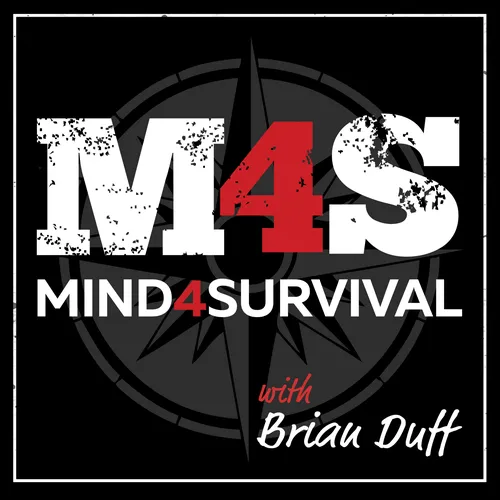Situational Awareness Training: Are You Really Prepared?
- Author
- [email protected] (Brian Duff)
- Published
- Mon 28 Apr 2025
- Episode Link
- https://mind4survival.com/situational-awareness-training/
Every day, the world around you is sending signals — some obvious, many subtle. The ability to pick up on those signals, to read the situation before it unfolds, can mean the difference between success and failure in overcoming the problems that may head your way. In today's world of uncertainty, sharpening your situational awareness training isn't optional. It's a necessity.
And the truth is, situational awareness training isn't about fear. It's about living consciously, stacking the odds in your favor, and putting yourself in a position to better manage both life's opportunities and its dangers.
As a former Army Ranger, international security advisor, and paramedic, I’ve spent decades training and relying on situational awareness to stay safe in high-risk environments. So, today, I'm going to walk you through practical ways you can quickly develop your situational awareness training, so you're ready for whatever the world throws your way.
TL;DR Situational awareness is about being in tune with your personal environment, honing your perspective, and stacking the odds in your favor. These 7 tips will help you sharpen your awareness so you can make better decisions, avoid surprises, and stay ahead of the curve—without the the doom and gloom, hype, or overreaction.
🎥 Prefer to watch? Here’s the full video version of this post:
Quick Look at What You’ll Learn
Toggle
1. Use the OODA Loop to Improve Situational Awareness2. Stay in Condition Yellow (Cooper’s Color Code)3. Know Your External Baseline4. Trust Your Internal Baseline5. How to Scan Your Environment and Read Body Language for Threats6. How to Improve Situational Awareness by Limiting Distractions7. Practice “What-If” ThinkingBottom Line on Situational Awareness TrainingAdditional Resources
1. Use the OODA Loop to Improve Situational Awareness
First up: understand and use the OODA Loop.
OODA stands for Observe, Orient, Decide, Act. It's a decision-making cycle originally developed by Air Force Colonel John Boyd for fighter pilots. But it applies perfectly to your everyday life too.
Observe your surroundings.
Orient yourself by understanding where you are and what's happening.
Decide on a course of action based on what you see.
Act swiftly and decisively.
The key is that you're constantly cycling through these four steps. You don't observe once and move on; you're always feeding new information into the loop to stay ahead of the curve.
Good situational awareness isn't just about knowing what's happening right now—it's also about making better predictions about what could happen next. When you consistently observe and orient yourself effectively, you start to anticipate how situations might unfold. This ability to predict—even just a few seconds into the future—gives you a massive advantage, whether you're avoiding potential threats, capitalizing on opportunities, or simply managing your everyday life more effectively.
Training your situational awareness also strengthens your decision-making skills and improves your overall problem solving abilities, allowing you to act swiftly and decisively when necessary. In the end, mastering the OODA Loop is a cornerstone of any serious situational awareness training program.
2. Stay in Condition Yellow (Cooper's Color Code)
Next, you need to understand "Condition Yellow."
Colonel Jeff Cooper developed a simple system to explain awareness levels, known as Cooper's Color Code:
White: Unaware and unprepared.
Yellow: Relaxed alertness. You're aware of your surroundings, but not tense.
Orange: Focused alert.
